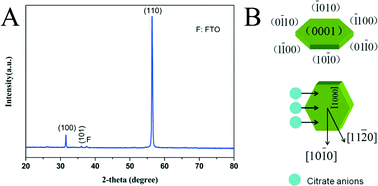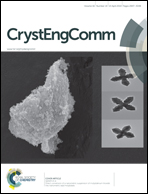Synthesis of ZnO nanosheet array film with dominant {0001} facets and enhanced photoelectrochemical performance co-sensitized by CdS/CdSe
Abstract
In this work, [110] oriented ZnO nanosheet (ZnONS) array films with a large percentage of high-energy {0001} surfaces were prepared for the first time with the assistance of sodium citrate. ZnONS array films possess prominent UV–visible absorption with an absorption edge at ~405 nm, indicating that the optical property of the semiconductor is dependent on a specific crystal structure and crystal plane. CdS and CdSe quantum dots (QDs) were assembled onto ZnONS array films to form a cascade structure of ZnONS/CdS/CdSe by the successive ionic layer adsorption and reaction method. The as-fabricated photoanode exhibits strong absorption in the visible spectrum up to 735 nm. With light illumination, the optimum photoanode yields a photocurrent of ~4.40 mA cm−2 at 0 V versus SCE, which is about 4.6 times of that of pure ZnONS samples. The excellent photoelectrochemical (PEC) properties of our photoanodes suggest that the QDs sensitized ZnONS array films with a large percentage of high-energy surfaces have potential applications in PEC solar cells.


 Please wait while we load your content...
Please wait while we load your content...